MELISSA ANDRESKO
Lutron – EB
ED BAIG
Writer, AARP
TOM CAMPBELL
Video and Audio Center: HOF
ROB CALEM
Writer
ROGER CHENG
CNET
BOB FIELDS
Hibersense
DENISE GIBSON
Ice Mobility: BIL
SUZANNE KANTRA
Techlicious
NANCY KLOSEK
Dealerscope: HOF
SALLY LANGE
Slang
STEVE SMITH
Formerly TWICE: HOF
MIKE SNIDER
USA Today
JONATHAN TAKIFF
TechHive
GREG TARR
HD Guru.com
JOHN TAYLOR
LG Electronics: CC
DEVELOPERS, APPLE iTUNES



Working together with Apple founder Steve Jobs, Robbin, Kincaid and Heller created iTunes based on the SoundJam code base but with an all-new design.
Not many people can claim to have created the most popular thing ever. Jeff Robbin, Bill Kincaid and Dave Heller developed Apple’s iTunes, the most popular digital media software in the world. iTunes became the cornerstone of Apple’s media devices and services, which also include the iPod, the iTunes Store, Podcasts, Apple TV, and Apple Music.
Despite their disparate backgrounds, Robbin, Kincaid, and Heller all had relationships with Apple computers and Apple itself before their careers converged to create iTunes.
Jeff Robbin was born Sept. 8, 1969, in Port Chester, N.Y., but he grew up in Highland Park, Ill. His father, David, owned a residential real estate company, and his mother, Marilyn, taught first grade. One of Robbin’s first computers was an Apple //e. He worked summers at a local computer store and later designed custom software for his father’s business.
While earning his bachelor’s degree in computer science, with a minor in business, from the University of Iowa (1991), Robbin worked in the university’s Computer Maintenance Department, designing and implementing several computerized systems, primarily with Macintosh computers. While in graduate school, Robbin created Conflict Catcher, which identified conflicting extensions in Mac OS, which he published with Casady & Greene.
While Robbin was working on Conflict Catcher, Dave Heller was working for Symantec on AutoDoubler, software that conflicted with Robbin’s Conflict Catcher when both were installed at the same time. The pair first met online over AOL to try to resolve the conflict.
Heller was born Feb. 17, 1967, in Ames, Iowa, and was later raised in Phoenix. His father, Rodney, was a partner at an environmental consulting firm, and his mother, Lynette, was an anthropologist. Fascinated with electricity and electronics from an early age, Heller was always flicking all the light switches whenever he entered an unfamiliar room, needing to know which switch did what. Watching an engineer neighbor constantly tinkering inspired Heller to get a Mac, and he soon discovered software. After he earned his bachelor’s in electrical engineering from the University of Arizona (1991), Heller moved to the San Francisco Bay Area and went to work at Salient Software, later acquired by Symantec. He worked on a Mac Finder copy replacement engine, CopyDoubler, and Norton Utilities for the Mac, along with AutoDoubler, where he met Robbin.
In the summer of 1992, Robbin worked at Apple as an intern, testing the Motorola 68000 emulator used in the transition of the Macintosh to PowerPC processors. After earning his MBA from the University of Illinois Urbana-Champaign (1993), Robbin also moved to the Bay Area to join Apple on its operating system team. While working to create a modern operating system for Macintosh, Robbin met Bill Kincaid, who was working on Apple’s OS tools and the debugger team. In 1995, Heller joined Apple as part of the file system team.
Kincaid was born March 10, 1956, in Lima, Peru, and grew up in Puerto Rico. Kincaid’s father, Robert, founded a spectrochemical oil analysis lab, where his mother, Carolyn, also worked as office manager. Fascinated by how things worked as a child, Kincaid disassembled the family’s waffle iron and discovered that taking things apart was much easier than putting them together. After earning his bachelor’s in mechanical engineering from MIT (1979), an MBA from Stanford (1987), and his master’s in computer science from Stanford (1989), Kincaid went to work at Apple, first writing manufacturing support software, then working on debuggers, then in OS development, where he met Robbin.
In 1996, Heller left Apple to work for Pretty Good Privacy. In 1997, Kincaid and Robbin also left Apple. Robbin and Heller then co-developed Casady & Greene’s Speed Startup, which quickened a Mac’s boot process.
In September 1998, Diamond Multimedia introduced its Rio PMP 300, the first commercially successful MP3 player. But the Rio didn’t work with the Macintosh. Recognizing the opportunity, Kincaid contacted Robbin, and the two started working on a brand-new MP3 player app. While Robbin worked on the app, Kincaid started rewriting an MP3 encoder the pair had licensed. Kincaid and Robbin then established a new company, SoundStep, and dubbed the Mac-compatible app SoundJam, published by Casady & Greene in 1999.
SoundJam was the first all-in-one MP3 app that would connect to devices, rip from CDs, manage playlists and song metadata, as well as play digital audio. Heller then joined Kincaid and Robbin to create the next version of SoundJam, SoundJam MP Plus. All three worked full time to add features, fix bugs, and keep SoundJam competitive in the marketplace.
With the increasing popularity of digital music, Apple decided to bring MP3 software to Mac OS. The company approached Robbin, Kincaid and Heller and acquired SoundJam in September 2000.
Working together with Apple founder Steve Jobs, Robbin, Kincaid and Heller created iTunes based on the SoundJam code base but with an all-new design. The result was simpler and more elegant, and introduced the concept of a library to contain a user’s music. In just four months the team transformed SoundJam into iTunes, which launched Jan. 9, 2001, and was promotionally dubbed the “World’s Best and Easiest to Use Jukebox Software.”
iTunes was designed to work with the growing number of Mac-compatible digital music players. But it was immediately clear to Robbin, Kincaid and Heller that Apple could, and should, build a better MP3 player that would mimic iTunes on-the-go. The original iPod was built with a subset of iTunes code at its heart that gave the player a library experience, automatic syncing, and an interface that allowed users to browse their music as if they were at a record store. Developed in just nine months, the first iPod was announced on Oct. 23, 2001.
Digital music sharing was roiling the record industry at the time, and labels struggled to convince customers to buy their products. Robbin, Kincaid and Heller lent their iTunes expertise to the development of the iTunes Store, the first legal digital catalog of music to sell tracks from all five major record labels, which opened on April 28, 2003. In October 2003, “hell froze over” when Apple released iTunes for Windows. Three years later, Apple introduced iTunes 7, which enabled support for purchasing and viewing video content from the iTunes Store. In April 2008, the iTunes Store became the largest music vendor in the United States. In February 2010, it became the largest music vendor in the world. The iTunes app was added to the Microsoft Windows 10 app store in April 2018.
Kincaid and Heller now work alongside Robbin, who serves as vice president of Apple Media Products (AMP). He oversees a software engineering team of more than 3,000 people responsible for the software behind Apple Music, Apple TV, Apple TV+, the App Store, iTunes Store, HomePod, Podcasts, as well as several other media-focused products.
FOUNDERS, VIDEO AND AUDIO CENTER (VAC), LOS ANGELES’S PREMIER A/V RETAILER
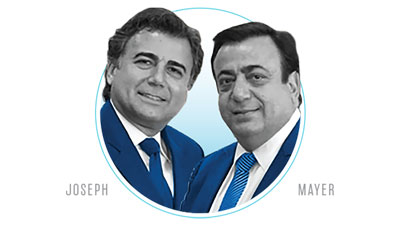
Joseph and Mayer Akhtarzad founded Southern California’s premier consumer technology retailer, Video and Audio Center (VAC), known for being the first in the nation to sell the latest technologies and as an A/V resource to the stars.
Joseph (April 29, 1958) and Mayer (August 23, 1954) were both born in Tehran. Their father worked in Iran’s wholesale pharmaceutical industry but sent his sons to England to receive their education. Joseph left at 13 and Mayer at 14. Joseph studied at Nottingham University, where he earned his bachelor’s (1980) and master’s degrees (1981), with honors, in electrical and electronic engineering.
After graduation, Joseph immediately joined Mayer and their parents in Los Angeles. Looking to take advantage of the new video rental craze then emerging, the brothers opened a small 1,000-sq.-ft. movie and video game rental store in Palos Verdes. Customers started asking for different types of gear, so the brothers attended CES 1982 and started signing deals with a host of major tech brands.
As technology and VAC’s customers grew more sophisticated, Joseph decided to integrate the separate touch-and-feel operation, the Just One Touch showroom, inside each VAC location.
They soon discovered their store was too small. In 1983, they moved to a 5,000-sq.-ft. store in Lawndale, but explosive growth soon prompted the opening of a second 3,000-sq.-ft. store in more centralized Santa Monica in 1985.
What differentiated VAC from its many competitors was its three Ds approach: discovery, desire and demand. Coupled with Joseph’s determination to stay ahead of their customers and carry all the latest gadgets and technologies regardless of price, VAC soon established a reputation for stocking bleeding-edge gear other retailers hadn’t yet considered “commercial,” attracting celebrity customers including Elizabeth Taylor and Michael Jackson, to name a few. Joseph consulted with many leading technology vendors interested in what consumers wanted, and potentially would want.
In 1993, VAC moved its Santa Monica store to a larger nearby 10,000-sq.-ft. location. In 2000, to address the increasing intricacy of consumer technology, Joseph opened a 5,000-sq.-ft. experiential showroom, Just One Touch, across the street from VAC’s Santa Monica flagship. The new showroom focused on exhibiting and integrating whole house technology solutions. In recognition of the entirety of the new consumer technology supply chain, the showroom also hosted events with and for contractors, interior designers and architects to show off the latest in in-home technologies. VAC joined the Home Theater Specialty America (HTSA) buying group in 2001 to continue to lead in selling and stocking the latest new home entertainment technologies.
As technology and VAC’s customers grew more sophisticated, Joseph decided to integrate the separate touch-and-feel operation, the Just One Touch showroom, inside each VAC store location. Wanting VAC locations to cover all of Los Angeles, Joseph opened VACs in Agoura Hills in 2009, Topanga Village Mall in Woodland Hills in 2015, and the Westville Century City Mall in Beverly Hills in 2017.
Throughout its growth, VAC maintained its first-in-the-nation technology introduction status, being the first to sell DVD and then Blu-ray players, 4K TVs, QLED TVs, 8K TVs, and Samsung’s first Wall TV. In 2021, VAC launched a “Just One Whisper” campaign highlighting the growth of voice-activated interfaces. VAC also maintains a 24-hour, seven-days-a-week customer service hotline. In 2022, VAC sold and installed the first Samsung MicroLED Wall TV for $800,000.
VAC has been awarded many retail, integrator and custom installer awards. In September 2021, the city of Los Angeles officially congratulated VAC on its anniversary, citing VAC’s essential services to the city during the Covid-19 pandemic.
LED SAMSUNG NORTH AMERICAN TO GLOBAL PROMINENCE
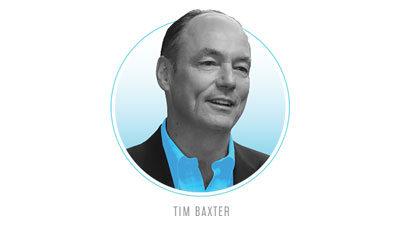
Samsung now sells more consumer technology devices than any other company in the world, in no small measure thanks to Tim Baxter. As president and CEO of Samsung Electronics North America, Baxter oversaw Samsung’s rise to become the top seller of TVs, appliances and smartphones.
Baxter was born into business in Brooklyn, N.Y., on April 2, 1961, to Alice, a real estate broker, and Jerry, an executive with AT&T. Baxter’s father taught him about “work ethic, treating people well, connecting with people and choosing to out-hustle ‘em.’ After one long day of high school and an evening busing tables, Baxter’s father told the teenager: “You can work with your hands or work with your head. But if you chose the former, you better build a real skill. Otherwise, work with your head.” His wife, Brenda, later attested that having seen him work with a hammer, she is glad he chose the latter.
After graduating from Roger Williams University in 1983 with a bachelor’s in marketing, Baxter joined AT&T as an analyst for a startup division, marketing and selling residential phones at retail. Baxter spent 13 years at AT&T, growing into roles in sales, marketing and product management.
Baxter tripled Samsung’s TV/AV market share to 35%, grew its appliance business from less than a billion to $4 billion, and cultivated and sustained a leading smartphone market share.
In 1996, Baxter began a decade-long GM career at Sony, where he turned around Sony’s struggling home phone business, took over its TV and A/V businesses, and navigated the profitable technology shift from tube to flat panel TV. He also successfully negotiated Hollywood studio support of Blu-ray during the next-generation format war, and rose to senior vice president of strategic marketing.
After several attempts to recruit him over five years, Samsung hired Baxter in 2006 as executive vice president of sales and marketing for the company’s consumer electronics division. Baxter understood that for the company to become the global leader in consumer electronics, it first had to become the top-selling brand in the U.S.
Baxter brought to Samsung his previous management experience combined with an expanded version of his father’s teachings, adding “stay hungry but humble” and “how to manage unique cultures.” Over the next 13 years, Baxter was promoted to president of Samsung Electronics North America in 2009, the company’s first non-Korean global executive; COO in 2014; and CEO of North America in 2017, responsible for the company’s 6,000 employees. By capitalizing on emerging trends, scaling businesses, building teams, strengthening brand loyalty, deploying emerging technology platforms and successfully managing unanticipated challenges, Baxter tripled Samsung’s TV/AV market share to 35%, grew its appliance business from less than a billion to $4 billion, and cultivated and sustained a leading smartphone market share. In 2016, Baxter boldly led Samsung through its Galaxy Note 7 recall crisis, learning to “own it, get after the root cause, be transparent, and communicate, communicate, communicate!”
During his tenure, Baxter helped Samsung grow from $6 to $30 billion in annual sales and transform from a tier 2 brand to a global top five brand. Before retiring in 2019, Baxter developed the company’s long-term strategic plan for capitalizing on emerging shifts and technologies, including 5G, AI, cloud, IoT and connected intelligence. He also served as a CTA director and as a member of CTIA’s executive board.
Baxter has stayed busy in retirement, joining two publicly traded boards: PAVMED, a med tech company, and Breville, a small appliance maker. He serves as an operating partner at the Centre Partners Management LLC private equity firm and as chairman of two if its portfolio companies, a lead outside director of technology for the First Orion software company and a director for two pre-revenue startups. In addition, and he is active with several nonprofits.
DIGITAL SIGNAL PROCESSOR PIONEER
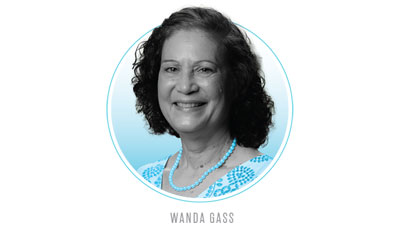
How do all those digital devices around the home know what to do with trillions of 1s and 0s? How do smart devices understand what users ask or tell them?
All modern digital device functions are made possible thanks to the digital signal processor (DSP), the development of which Wanda Gass played a crucial and visible role. As a woman working in what was traditionally a man’s field, Gass broke down barriers and paved the way for future generations of women engineers.
Born June 30, 1956, Gass was the younger of Mamie and Kenneth English’s two daughters. Her father, a petroleum engineer, recognized his daughter’s interest in math and science when she was a teenager, and he encouraged her to join the Boy Scouts’ Explorer’s Club, where she learned more about engineering work. In 1978, she earned a Bachelor of Science degree in electrical engineering from Rice University in Houston. Gass left Texas for North Carolina, earning her master’s in biomedical engineering from Duke University in 1980. While there, she developed a circuit board and algorithm to analyze ultrasound images to detect heart defects.
Gass worked on the Signal Processing Computer chip’s design, earning three patents. Because of its 32-bit data path, the chip’s part number became TMS32010, the world’s first commercially viable DSP.
After graduation, Gass returned to Texas, choosing a job at Texas Instruments (TI) as an integrated circuit designer with a group designing a specialized microprocessor, the Signal Processing Computer. In 1982, Gass contributed to an influential TI paper on the chip architecture, which was presented at the International Solid State Circuits Conference (ISSCC).
TI’s long history on speech recognition heavily influenced the SPC’s functionality and design. Gass worked on the chip’s design, earning three patents. Because of its 32-bit data path, the chip’s part number became TMS32010, the world’s first commercially viable DSP.
At first, the TMS32010’s speed — it could multiply at a then-speedy 200 nanoseconds — impressed other engineers. It was used to efficiently analyze digital signals using Fast Fourier Transforms (FFT) and Finite Impulse Response (FIR) filters. In 1987, however, the TMS32010 chip was used in the Julie Doll, marketed as the world’s first interactive doll because she could learn and recognize her name, respond to keywords and conduct rudimentary conversations rather than merely play back canned responses. While the Julie Doll was not a commercial success, it provided proof of concept.
The landmark TMS32010 marked only the beginning of Gass’s DSP and speech recognition work at TI. Starting in 1982, she worked on a multiprocessor board aimed at facilitating speech recognition of a 2,000-word vocabulary.
The TMS320xx product line was quickly adopted for a variety of commercial, military, and consumer applications, such as hard disk drives for computers; compressing and storing digital movies, songs and pictures; cell phones; hearing aids; portable sonogram machines; and cellular towers that handle thousands of simultaneous calls. During her career, Gass contributed to advances in the medical field’s transition to better instrumentation, and the multimedia’s conversion to digital technology. Her contributions in analyzing hardware and software tradeoffs created the lowest cost and lowest power architecture, along with the right amount of programmability.
In 1999, Gass became one of the first two women named as a TI Fellow for significant contributions to TI’s first DSP and her sustained leadership in design of DSP architectures and applications.
In 2007, Gass was named an IEEE fellow “for contributions to digital signal processors and circuits” and developed a mentoring program for technical women at TI. Gass elected to take early retirement from TI in 2012. She founded Design Connect Create in 2014, a Dallas-based nonprofit that encourages and prepares women to pursue careers in STEM fields.
GPS NAVIGATION PIONEER
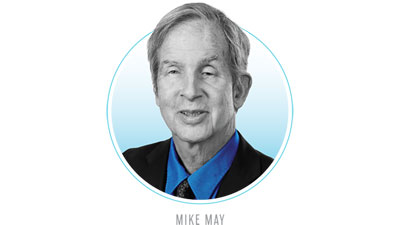
Mike May has led innovation in multiple fields, including audio, computers, GPS and indoor navigation.
When May was 3 years old, while playing in the garage, he opened a jar containing volatile calcium carbide. He combined it with water and was blinded by the resulting explosion. His mother treated him no differently from his siblings, believing her children needed to learn how to solve their own problems. O.J., as his mother was called, taught Mike that he was lucky to be alive — being blind was a blessing.
When he was 13, May was interested in ham radio and built an 80-ft. antenna tower. A few years later, he insisted on trying to drive his sister’s new car, believing like many teens that he was invincible. In 1976, May earned his Bachelor of Arts in political science from UC Davis, and he spent a term studying and working in a village in Ghana. In 1979, he obtained his master’s from Johns Hopkins School of Advanced International Studies, during which time he worked for the CIA as a political risk analyst on Africa. May also was a pioneer as the agency’s first blind employee.
May founded the Sendero Group, which created the first accessible GPS and talking maps, revolutionizing how blind people independently access location information.
Feeling limited by government predictability, May moved to San Francisco and took a job at the Bank of California automating wire transfers and cash machines. He then spent two years at TRW, where he developed a new high-tech international political risk analysis business using satellites. In 1984, he joined Rob Reis and three engineers to launch Finial Technology, which designed and marketed the world’s first laser turntable, winner of a CES Innovation Award in 1987. In 1988, May moved to Ashland, Ore., where he founded Maytek Sports. The company produced the Bunwarmer and then Custom-Eyes Computer Systems, which provided adaptive computer systems for the blind. After selling that business, May joined Arkenstone to design and market some of the first accessible OCR systems for the blind.
May was a pioneer in alpine skiing for the blind, innovating the front-guiding technique. He still holds the downhill speed record for a blind person: 65 MPH.
May never sought vision, but a chance encounter with a prominent ophthalmologist in 1999 led him to see what would happen with a revolutionary stem cell transplant. Upon removal of the bandages on March 6, 2000, May became one of fewer than 20 people in history to regain some vision after a lifetime of total blindness, as told in the bestselling book “Crashing Through” by Robert Kurson.
While dealing with his newly acquired vision, May founded the Sendero Group, which created the first accessible GPS and talking maps, revolutionizing how blind people independently access location information. Sendero products won CES Innovations Design and Engineering Awards at CES in 2004 and 2009. For the 2009 CES, May recruited his friend Stevie Wonder and 15 blind colleagues to host the Sendero booth and present the Wonder Vision awards for accessible products.
In 2017, May was named president and CEO of The Lighthouse for the Blind in Seattle, Wash. A year later, he became executive director at the Wichita, Kansas-based Envision. In July 2019, May returned to his GPS pioneering roots by joining GoodMaps, a startup creating indoor mapping and pedestrian navigation.
Through the course of his career, May met Presidents Carter, Reagan, Clinton, Obama and Biden, including meetings to determine what would be a “moon shot” for people with disabilities. May’s motto “there is always a way” has powered his innovations so far and will remain fundamental to his next adventures in years to come.
CES AMBASSADOR, POLICY ADVOCATE, HIP HOP PIONEER
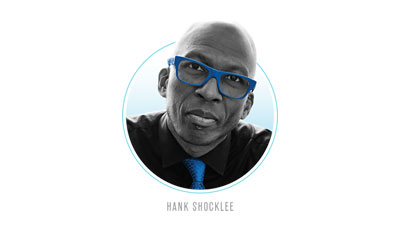
Hip hop and government regulation are two subjects that aren’t often found in the same sentence — or person. But Rock and Roll Hall of Fame inductee Hank Shocklee used his standing in the music industry to discourage the U.S. Congress from passing bad technology legislation. The work led him to become a CES Ambassador and advocate for consumer technology rights.
Shocklee was born in Manhattan on May 7, 1958, to Dorothy Loraine Boxley, an executive secretary, and James Henry Boxley Jr., a dry-cleaning business owner. Shocklee’s father served as a drill sergeant in the U.S. Army and instilled a desire for organization and efficiency in his son. His parents also loved music: His mother was a pianist and his father collected jazz, and their whole house was wired with speakers. Shocklee was amazed by this music technology from a young age. He would take apart speakers and the hi-fi equipment at home, much to his father’s horror. Shocklee soon learned to build speakers, and from there he created a custom stereo mobile DJ rig he took on tour throughout the tri-state area, playing parties from 1972–1983.
Shocklee studied economics and business management for three years at Hofstra University, leaving to pursue his flourishing music career. He worked in sales and speaker construction at Hammond Industries Meteor Light and Sound for four years, then spent another three years at Record World as a manager/supervisor and 12-inch sales buyer. Shocklee transformed his homemade mobile rig into The Bomb Squad music production team with his brother, Keith Shocklee, and Eric “Vietnam” Sadler, inspired by the Berry Gordy/Motown recording manufacturing assembly line but with new technology. He co-founded the ground-breaking hip hop group Public Enemy along with The Bomb Squad, which served as the group’s production arm, and signed with Def Jam Records.
Shocklee played a role in preventing the passage of the controversial anti-piracy Protect IP Act (PIPA) and the Stop Online Piracy Act (SOPA) being considered by Congress, and permanently shelved.
Shocklee’s work with Public Enemy and his development of innovative sampling technology led him to equally impactful music partnerships over the next two decades with artists such as Mary J. Blige, Anthony Hamilton, Ice Cube, LL Cool J, and Slick Rick, and on films such as Spike Lee’s Do the Right Thing, Ernest Dickerson’s Juice, Ridley Scott’s American Gangster, and others. He founded his own record label, S.O.U.L. (Sound of Urban Listeners), and served as SVP of the Black Music Division for MCA/Universal Records from 1990–1999. In 2013, Shocklee was inducted into the Rock and Roll Hall of Fame with Public Enemy.
One year prior to his induction, Shocklee played a role in preventing the passage of the controversial anti-piracy Protect IP Act (PIPA) and the Stop Online Piracy Act (SOPA) being considered by Congress. In January 2012, Shocklee and 18 other musicians, actors, directors, authors and producers signed an open letter to Congress expressing deep concern that “PIPA and SOPA’s impact on piracy will be negligible compared to the potential damage that would be caused to legitimate Internet services. Online piracy is harmful, and it needs to be addressed, but not at the expense of censoring creativity, stifling innovation or preventing the creation of new, lawful digital distribution methods.” The furor raised by Shocklee and other artists and advocates resulted in PIPA/SOPA being permanently shelved.
His work with CTA to block PIPA/SOPA led Shocklee to become a CES Ambassador in 2010 and an endorser for audio technology companies including Dolby, Monster and SVS Sound. Shocklee’s use of inventive production techniques is why his opinions about audio are trusted, and why he is heralded as a sonic innovator.
Shocklee meets regularly with technology company representatives, teaming up not only to learn but also to advocate for consumers through evolving trends in audio, entertainment technology and policy.